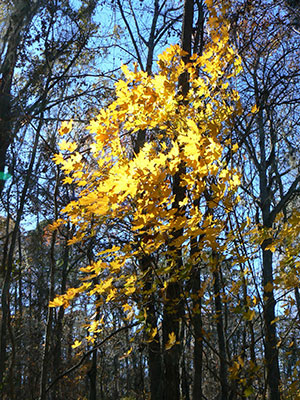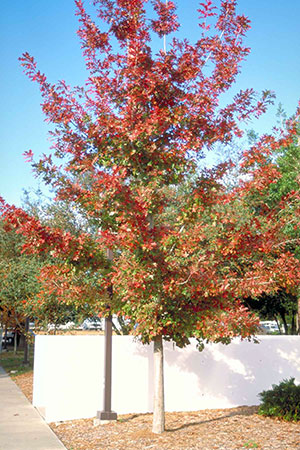As winter approaches, short days and cool temperatures cause many plants to slow down and enter a suspended growth phase known as dormancy. Dormancy in plants is similar to the way bears hibernate during the winter. You may be asking yourself what is dormancy? And how can I get in on that? Well, to be honest, there isn’t an all-encompassing answer. It seems that plants (and bears) are keeping that secret all to themselves.
Now that winter is indeed coming, deciduous plants start to breakdown proteins and other chemicals in their leaves and store them in the buds, bark and wood for growth next spring. Many deciduous plants lose their leaves as they become dormant, such as maples and dogwoods. Evergreen plants such as pine trees and camellias keep their leaves all winter.
There are actually two types of dormancy during the winter. One is called endo-dormancy. In endo-dormancy, the plant refuses to grow even under hospitable conditions. In endo-dormancy, something inside the plants is inhibiting growth. The other form is eco-dormancy and occurs when the plant is ready to grow, but the environmental conditions are not favorable (usually too cold). Short days and freezing temperatures in the fall induce endo-dormancy in the plant, which occurs first.
As the plant enters endo-dormancy, it tracks chilling hours to chart the passage of the winter. Chilling hours are the time when temperatures drop below 45 degrees Fahrenheit. The number of hours required for chilling varies for different plants. Many people think the plant is tracking hours below freezing. However, hours below freezing have no effect on chilling, but will increase cold hardiness. If warm weather occurs before the plant completes its chilling requirement, no growth occurs. Chilling and endo-dormancy normally prevent plants from beginning growth during warm spells in the middle of the winter. Not all hours above freezing are equal. Temperatures between 35 and 45 degrees Fahrenheit seem to be most effective. Temperatures just above freezing and above 50 F are less effective and temperatures above 60 F often have a negative effect on chilling.
After a plant has checked off its chilling hours it is no longer in a state of endo-dormancy. It is now in eco-dormancy. The plants are dormant only because of cold temperatures. Warmer weather will cause plants to yawn, make that final stretch, and begin to grow. Growth first becomes apparent when buds swell and then green tissue emerges from the bud. However, plants actually begin growing before we notice their swelling buds. So this winter when your plants start to shed their leaves don’t be frightened, they may just be taking a much deserved rest in preparation for a brilliant show come spring.
Please contact your local extension office for more information.
- Reference Books for Gardeners and Landscapers Alike - August 3, 2015
- The Danger Within… What’s Hiding in Our Woods - June 15, 2015
- What To Do with All This Rain? Plant a Rain Garden! - April 14, 2015


